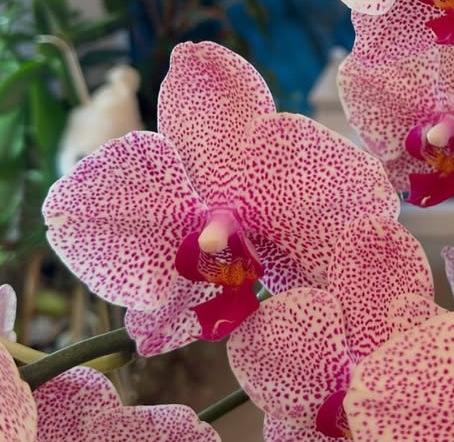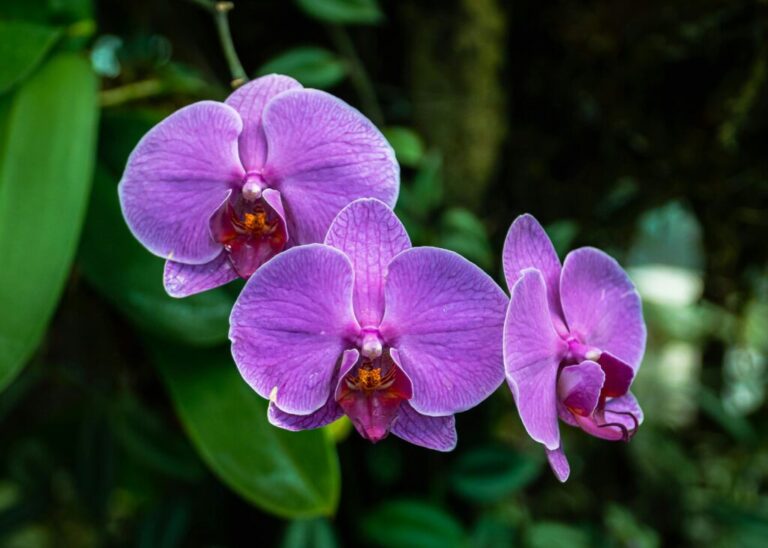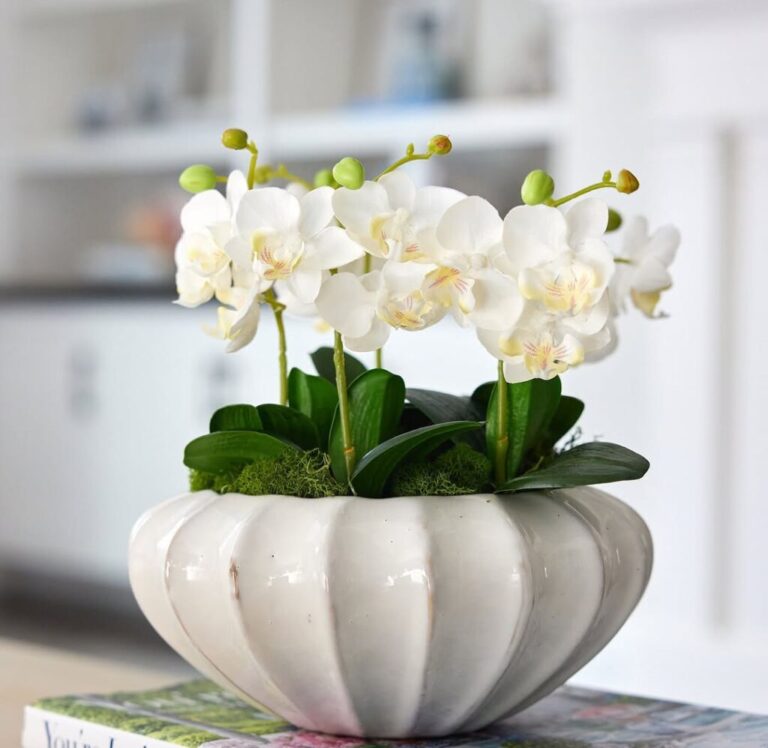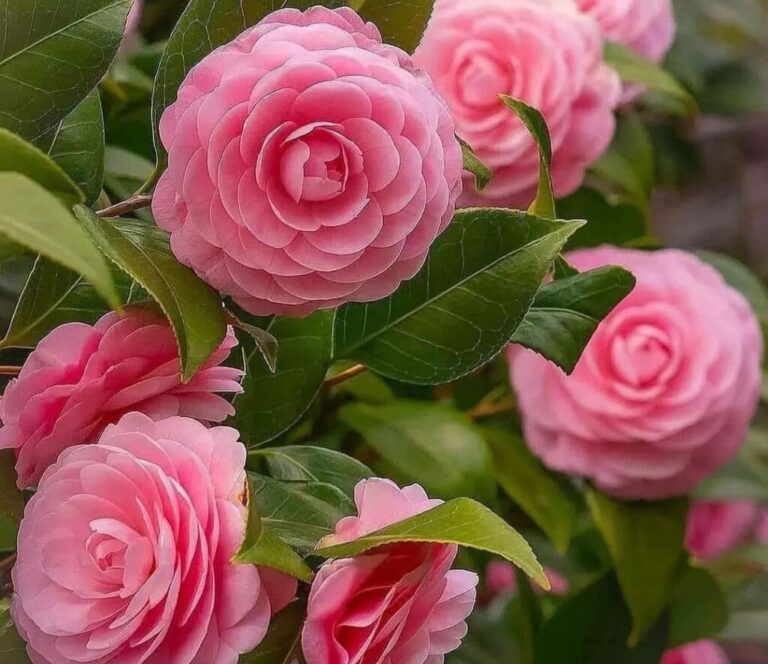Orchid Temperature Have you ever wondered why your orchid isn’t blooming as expected? The secret often lies in temperature! Orchids are fascinating plants, but their ability to bloom and thrive depends significantly on maintaining the right temperature conditions. Whether you’re growing orchids indoors or outdoors, understanding their temperature needs will help you unlock healthier growth and consistent blooms.
Temperature is one of the most critical factors affecting an orchid’s life cycle. Many orchids require specific temperature fluctuations between day and night to encourage flowering, while others need consistent warmth to grow properly. If the temperature is too high, orchids may become dehydrated and stressed, leading to bud blast and poor flowering. On the other hand, if the temperature is too low, orchids may suffer from cold damage, leading to blackened leaves and stunted growth.
In this guide, we’ll explore how temperature affects orchids, what you need to know about their growing conditions, and how you can create the perfect environment for your orchids to flourish.
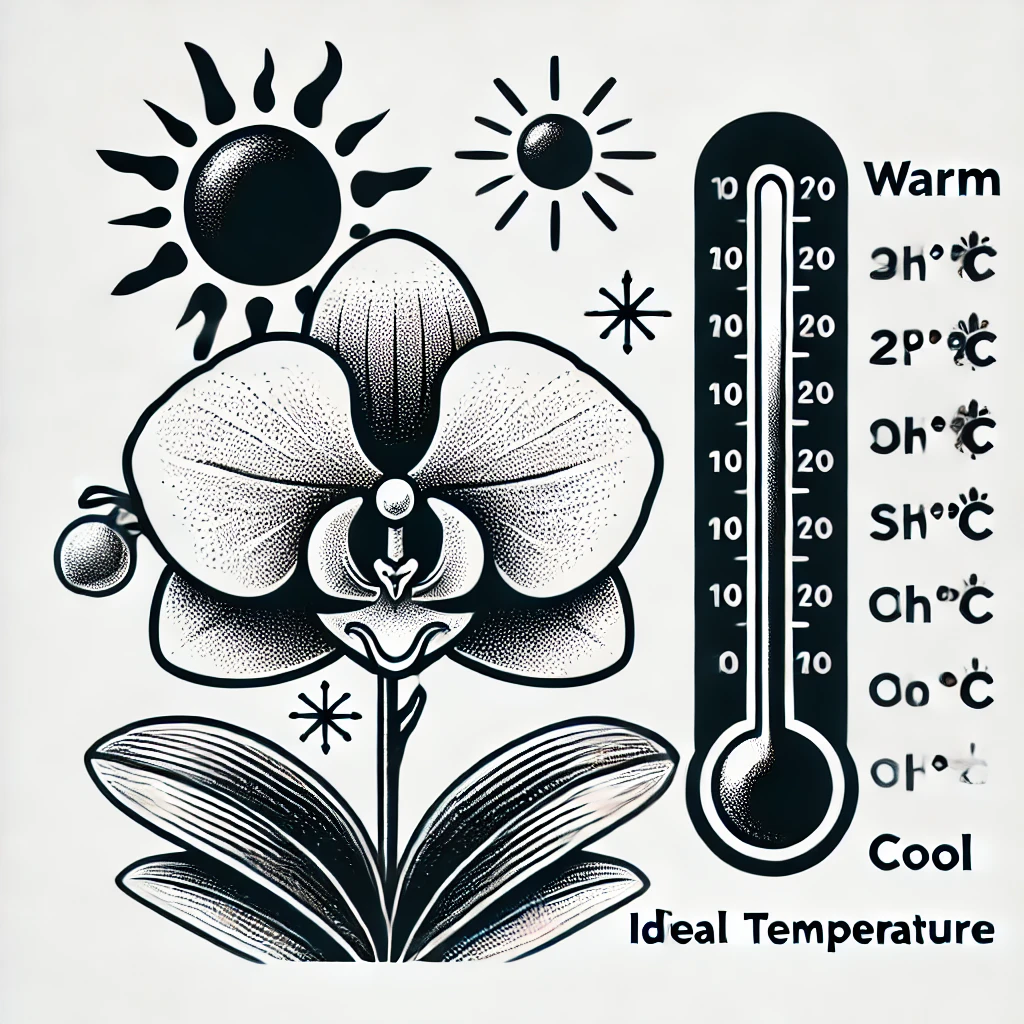
- 1 The 4 Most Important Things About Orchids Temperature
- 2 Understanding Orchid Temperature Categories
- 3 A. Warm-Growing Orchids
- 4 B. Intermediate-Growing Orchids
- 5 C. Cool-Growing Orchids
- 6 Daily and Seasonal Temperature Variations
- 7 How to Choose Orchids That Match Your Climate
- 8 Preventing Heat Stress in Orchids
- 9 Protecting Orchids from Cold Damage
- 10 Essential Tools for Temperature Control
- 11 FAQS
The 4 Most Important Things About Orchids Temperature
Before we dive into specifics, here are four crucial temperature-related factors every orchid grower should know:
Temperature Triggers Blooming – Orchids won’t bloom without the right temperature cues. Some species require a seasonal drop in temperature to initiate flower spikes.
Nighttime Temperature Drops Are Essential – A 10°-15°F (5°-8°C) drop between day and night is crucial for flower initiation. This mimics the natural conditions in their native habitats.
Orchids Have Different Temperature Preferences – They are categorized into warm, intermediate, and cool-growing types. Each type has specific requirements for optimal growth and flowering.
Choose Orchids Based on Your Climate – Selecting orchids that match your home environment makes care easier and ensures success. Growing an orchid suited to your climate will reduce stress and maintenance efforts.
Understanding Orchid Temperature Categories
A. Warm-Growing Orchids
Ideal Temperature Range: 65°-85°F (18.3°-29°C)
Popular Varieties: Phalaenopsis, Vanda, Dendrobium Phalaenopsis
Best Environment: Indoors, greenhouses, or tropical climates
Care Tips: These orchids thrive in consistently warm conditions with high humidity. Avoid exposing them to sudden cold drafts, as they are highly sensitive to temperature drops.
B. Intermediate-Growing Orchids
Ideal Temperature Range: 60°-80°F (15.5°-26.6°C)
Popular Varieties: Cattleya, Miltoniopsis, Oncidium
Best Environment: Most indoor settings with controlled conditions
Care Tips: Intermediate-growing orchids require balanced temperature control. They can tolerate mild fluctuations but should not be exposed to prolonged cold or excessive heat.
C. Cool-Growing Orchids
Ideal Temperature Range: 50°-75°F (10°-23.9°C)
Popular Varieties: Cymbidium, Masdevallia, Zygopetalum
Best Environment: Cooler greenhouses, outdoor gardens in temperate regions
Care Tips: These orchids thrive in cooler conditions with good air circulation. In hot weather, they may require additional shading and misting to stay comfortable.
Matching your orchids to the temperature range you can provide will make care much easier!
Daily and Seasonal Temperature Variations
Temperature isn’t just about the general range; it’s also about fluctuations. Orchids naturally experience different temperatures throughout the day and seasons:
Day vs. Night: A small nighttime temperature drop helps trigger blooming by simulating natural habitat conditions.
Seasonal Adjustments: Many orchids require cooler fall temperatures to initiate flowers for winter and spring blooming. If an orchid doesn’t experience this change, it may fail to bloom.
Temperature Stress: Orchids exposed to extreme temperature swings may exhibit stress symptoms like yellowing leaves, bud drop, and slowed growth.
Mimicking natural conditions leads to healthier orchids!
How to Choose Orchids That Match Your Climate
Before purchasing an orchid, research its temperature preferences. Here are some tips:
If your home stays warm year-round, choose Phalaenopsis or Vanda orchids. These varieties thrive in stable warm environments with high humidity.
If you have seasonal variations, Cattleya and Oncidium can adapt well. These orchids are more tolerant of mild fluctuations in temperature.
If you can provide cool nights, Cymbidium orchids will thrive. These orchids require cool nighttime temperatures to trigger flowering.
By selecting the right orchid for your environment, you’ll avoid unnecessary struggles and create a stress-free growing experience.
Preventing Heat Stress in Orchids
Extreme heat can cause orchids to dehydrate and suffer sunburn. Here’s how to protect them:
Provide Shade: Use sheer curtains or shade cloth for outdoor orchids to protect them from harsh sunlight.
Increase Air Circulation: Use fans to keep airflow steady and prevent stagnant, hot air from damaging leaves.
Maintain Humidity: Mist orchids in dry conditions to prevent overheating and leaf desiccation.
Water Wisely: Increase watering frequency in hot weather but avoid overwatering, which can lead to root rot.
Proper cooling techniques will prevent wilting and leaf damage during hot seasons.
Protecting Orchids from Cold Damage
Cold temperatures can lead to blackened leaves and root damage. Keep your orchids safe by:
Bringing Them Indoors: Move them inside before nighttime temperatures drop too low, especially in winter.
Using a Heat Source: A small incandescent light or heating mat can provide warmth in a greenhouse.
Keeping Roots Dry: Wet roots and cold temperatures increase the risk of rot, so reduce watering in cooler months.
Covering Outdoor Orchids: If you must leave orchids outside, use frost cloths to protect them from sudden drops in temperature.
With these precautions, your orchids will survive and thrive through colder months.
Essential Tools for Temperature Control
To maintain the perfect temperature, consider investing in:
Thermometers and Hygrometers: To monitor temperature and humidity levels.
Fans:To enhance airflow and avoid summertime overheating
Heaters or Cooling Pads: For regulating temperature in extreme seasons and preventing stress-related damage.
Shade Cloths: To protect outdoor orchids from excessive sunlight and heat.
A well-monitored environment ensures your orchids stay stress-free and healthy.
How to Achieve the Right Nighttime Temperature Drop
Getting the perfect nighttime temperature difference can be tricky. Try these methods:
For Greenhouses: Open vents at night to let cool air in, simulating natural conditions.
For Indoor Orchids: Move plants closer to windows where temperatures drop naturally overnight.
For Outdoor Orchids: Place them in a protected area that naturally cools down at night, such as under a tree or near a shaded patio.
This simple adjustment will significantly improve your orchids’ chances of blooming.
Temperature plays a crucial role in orchid care, yet many beginners overlook it. By understanding your orchids’ needs and adjusting their environment accordingly, you’ll ensure healthier plants, longer-lasting blooms, and more rewarding growth.
FAQS
What is the ideal orchid temperature for healthy growth?
The ideal orchid temperature varies by species, but most thrive between 65–75°F (18–24°C) during the day and 55–65°F (13–18°C) at night.
Can orchids tolerate cold temperatures?
Most orchids are sensitive to low orchid temperature drops below 50°F (10°C). Prolonged exposure can lead to damage, so keep them in a stable environment.
What happens if the orchid temperature is too high?
Excessive orchid temperature above 85°F (29°C) can cause dehydration, leaf burn, and bud blast. Provide shade and increase humidity to protect your plant.
How does orchid temperature affect blooming?
Proper orchid temperature triggers blooming cycles. Many orchids, like Phalaenopsis, need a temperature drop of 10–15°F (5–8°C) at night to bloom.
Can orchids survive in air-conditioned rooms?
Yes, but maintaining the right orchid temperature is crucial. Keep them away from direct cold drafts and ensure humidity stays above 50%.
What is the best orchid temperature for winter care?
In winter, maintain orchid temperature between 55–65°F (13–18°C). Avoid placing them near heating vents or cold windows to prevent stress.
Should I change the orchid temperature during different seasons?
Yes, adjusting orchid temperature based on seasons helps mimic their natural habitat. Warmer days and cooler nights promote healthy growth
How does humidity impact orchid temperature regulation?
Humidity helps stabilize orchid temperature fluctuations. Low humidity with high temperatures can dry out leaves, while high humidity prevents dehydration.
What orchid temperature is best for root growth?
Healthy root development occurs when orchid temperature remains between 65–75°F (18–24°C) with consistent moisture and good airflow
Do all orchids have the same temperature requirements?
No, orchid temperature needs vary by type. Cool-growing orchids (e.g., Cymbidiums) prefer lower temperatures, while warm-growing orchids (e.g., Vandas) need higher temperatures.
